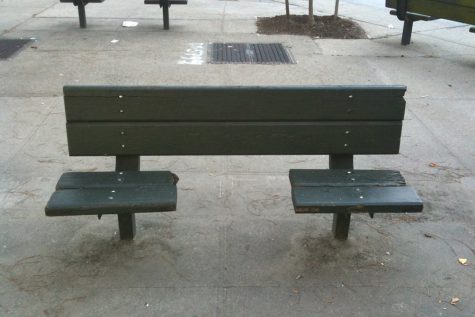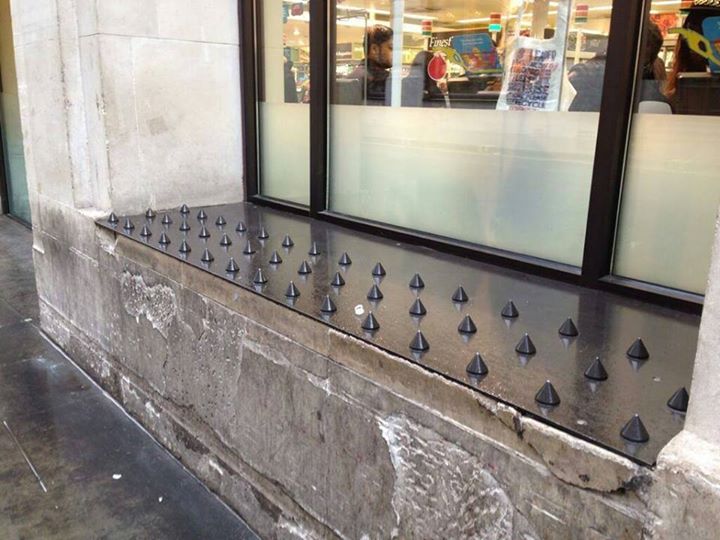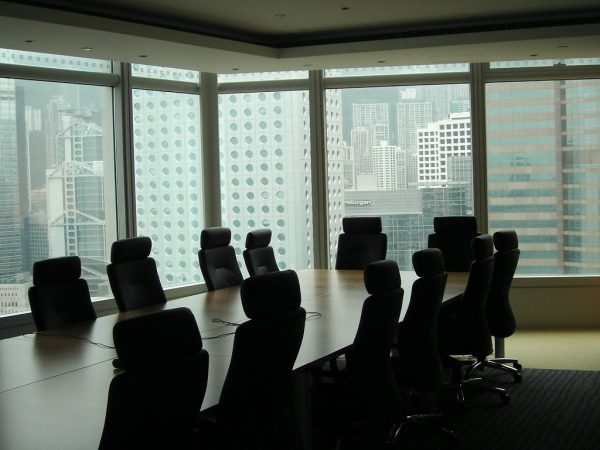Opinion: Anti-homeless architecture is harmful
March 6, 2021
As of 2019, 567,715 Americans were experiencing homelessness, according to Endhomelessness. As if that is not bad enough, the United States Census Bureau estimates that there are 17,019,726 vacant housing units in the country. Endhomelessness also states that instead of providing these people with shelter, there is hostile architecture being built in order to prevent homeless people from sleeping on the streets. This anti-homeless architecture is incredibly harmful, and could be fixed simply by housing the houseless.
No matter what part of the country you live in, chances are you have seen anti-homeless architecture. It can be as simple as arm rests on benches, or as complex as retractable spikes in the ground. While it may seem harmless, these arm rests are not for your arms, and these spikes only reveal themselves at night, as to avoid losing business. According to Endhomelessness, if congress were to provide just $3.1 billion for homeless assistance in 2021, then homelessness would be able to keep up with the rising eviction rate. While $3.1 billion seems like a lot of money, it is significantly lower than the cost of annual spending on homeless shelters, which is roughly $12 billion every year, as stated in an article from the New York Times.

According to an article from the International Network of Street Papers, the U.S. government has cut billions of dollars for housing people with low incomes since the 1980’s, which only increases the amount of people who end up homeless. The article also states that the deaths caused by homelessness can be directly traced back to the federal government not prioritizing housing. Thousands of homeless people are dying every year, and the number is only increasing. Anti-homeless architecture only makes being homeless, an already cruel fate, even worse, and harder to navigate.
Many people may be under the impression that homelessness is only an issue in big cities such as New York, Los Angeles or San Francisco. In reality, there are homeless people everywhere, even your hometown. As of 2020, an estimated 619 people were homeless in Wichita, Kansas, according to United Way of the Plains. This number does not even include people living in hotels temporarily, staying with friends or people currently in prison.

Hostile architecture is not only unpleasant to look at, but it makes it much more difficult for homeless people to find shelter. Anti-homeless architecture outside of a business just shows that they are unwelcome and unwanted. Instead of having this defensive architecture shooing homeless people away from what could be safe places to sleep, we should put to good use the vacant housing units already available, and make homeless shelters more accessible and welcoming. Many shelters are “faith-based,” and while yes, they do provide beds and shelter to those without, they also reserve the right to refuse people from their shelter based on religious and moral views.
Instead of spending thousands of dollars on anti-homeless architecture, a cheaper, and simpler solution would be to use federal funds to provide those in need with affordable housing.






















